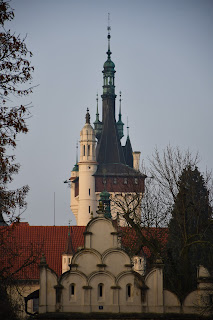Day 2 in Maputo: A run-in with friendly policemen
On my second day in Maputo, a lot of the sites I had planned to visit were closed. I knew this of the National Gallery beforehand, but I was caught by surprise when I arrived at the doors of the Museu da Moeda and they were not open. Contrary to the information on Google, the museum would not open until two o’clock, which was far too late for me given my afternoon flight. It was in front of this museum that an old lady approached me and demanded I erase my pictures of her from my camera. At first, I did not understand what she was saying, but when I did, my surprise gave way to a kind of disbelieving admiration for the misguided vanity that had led the lady to believe I was taking a picture of her and not of the historical building quite literally across the road from her. She did not believe I had not taken a single picture of her even when I showed her my camera roll, so I had to ask a nearby policeman to intervene. She demanded he give her his bottle of water.
The only
museum I found open that day (I did not really feel interested in the fishing
museum) was the Maputo Railway Museum – the Museu dos CFM. There were not very
many people inside, but the displays and panels were interesting enough,
presenting the history of Mozambique’s railways alongside the country’s
turbulent political developments.
I left the
railway station hoping to find a tuk-tuk immediately, but I did not come across
one until I had walked along the street stalls past several major junctions. I
asked the driver to take me first to the Square of Mozambican Heroes and then
the Airport, but I must have expressed myself unclearly in my practically
Neanderthalic Portuguese, as the driver drove past the square and I had to ask
him to go come back.
I was
walking on the square taking pictures of the star-shaped monument in the middle
when a policeman called out to me and approached me. I managed to respond to
the first line of the obligatory pleasantries in passable Portuguese, so he
proceeded to speak to me in the language despite my evident struggle to put
together a proper sentence without resorting to a mutilated Spanish. The
policeman told me that taking pictures on the square was prohibited (though it
was, he explained, permitted from across the square) and asked me to accompany
him to the police station just across from the square. He did this all in such
a polite and friendly manner that I had no misgivings and followed him as
blithely as I would a local guide.
My
interview at the police “station” – a table under a marquee – was very laid
back. The policemen were curious about where I was from, why I had chosen to
visit Mozambique, and how many days I was staying. They did make me delete
almost all my photos of the monument, but I took longer and longer between each
file asking, “and this one too?” until they took pity on me and let me keep the
last two in exchange for my repeated assurances that they were intended
strictly for my personal pleasure. I could see my driver observing the
situation nervously from behind the fence, but I was let go within less than
five minutes. When we arrived at the airport, I left him plenty of change for his
patience.










Comments
Post a Comment